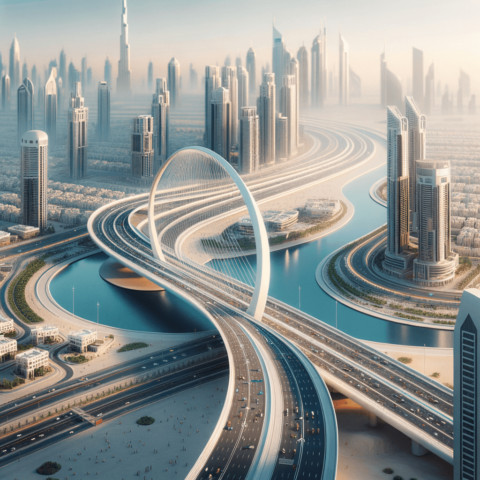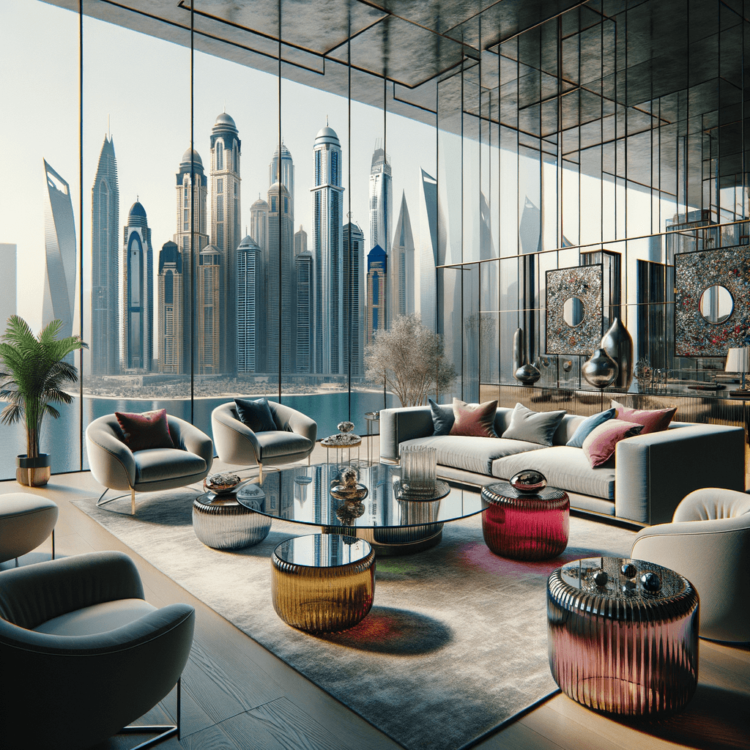
The Fury of Nature Hits Houston: A Wake-Up Call for Dubai’s Travelers
May 18, 2024
Dubai’s Delightful Days Await: Tomorrow’s Weather and Activities
May 19, 2024In a significant step towards becoming a cycling-friendly metropolis, Dubai announces the construction of a 13.5 km multi-use track. This development not only enhances urban mobility but also promises a new realm of business and leisure opportunities for tourists.
Strategic Design and Impact on Tourism
In a city renowned for melding luxury with futuristic design, Dubai’s new 13.5 km multi-use track is poised to redefine tourist experiences and catalyze business growth. This cutting-edge development seamlessly interlinks with major residential and commercial zones, including pivotal hubs such as Dubai Internet City. Embodying modernity, convenience, and architectural brilliance, the track delivers unparalleled connectivity that ensures both residents and tourists can easily navigate the vibrant city landscape.
Key to its strategic importance is the multi-purpose bridges that integrate effortlessly with the track, forming vital connections to prominent locales. The bridges not only enhance the aesthetic appeal but also serve as landmark features that contribute to the city’s unique skyline. Tourists visiting Dubai Internet City, for example, will find their journey swift and efficient, allowing more time to absorb the area’s innovation-driven ambiance and cutting-edge attractions.
The track’s proximity to essential commercial districts opens up myriad opportunities for businesses, from retail outlets to hospitality ventures, to leverage increased footfall. Enhanced accessibility ensures that tourists can easily visit popular attractions, driving foot traffic and boosting local economy. The sophisticated design also means businesses can operate with greater efficiency, attracting potential investors keen on futuristic urban infrastructure.
Moreover, the track bridges key gaps between significant residential areas, ensuring swift transit for daily commuters and visitors alike. This ease of movement not only enhances the quality of life for residents but also positions Dubai as a more appealing destination for tourists who value seamless navigation and time efficiency during their stay.
In conclusion, Dubai’s multi-use track stands as a monumental development, merging urban functionality with tourism enhancement. By fostering an interconnected urban environment, it sets a new benchmark in city planning, destined to attract global attention and investment.
Infrastructure Enhancements on Hessa Street
Hessa Street, an essential arterial route within Dubai, is currently undergoing a transformative upgrade. The Hessa Street Improvement Project aims to expand the existing roadway from two lanes to four lanes, addressing a critical need for enhanced capacity and efficiency. This expansion substantially improves traffic flow, reducing congestion and cutting travel times for commuters and tourists alike. The redesign extends to crucial intersections, where advanced traffic management systems will be implemented to streamline vehicle movement and improve safety.
These infrastructure improvements are not merely logistical but also strategic, creating a more accessible environment that encourages development and tourism. Easing the burden of traffic congestion makes the area more inviting for future developments, and the improved safety measures enhance the overall appeal for residents and visitors. The strategic position of Hessa Street connects key commercial and residential areas, making it a pivotal development corridor within Dubai’s urban fabric.
With better road connectivity, businesses can expect increased footfall, while tourists find it easier to navigate between major attractions. The enhancements foster a dynamic ecosystem where mobility and accessibility lead to greater opportunities for commercial growth and a more engaging visitor experience. These upgrades are integral to making Hessa Street a modern, efficient, and attractive destination within the bustling metropolis of Dubai, ensuring its role as a significant connector in the city’s expansive network.
The Architectural Marvel of Cycling Bridges
The architectural marvels of the new cycling and pedestrian bridges over Sheikh Zayed and Al Khail Roads are a testament to Dubai’s visionary approach to urban development. Inspired by the themes of connectivity and the path of sunlight, these bridges are more than mere infrastructural projects; they signify a futuristic blend of form and function. The design embraces smooth, flowing lines that mimic the natural trajectory of sunlight, creating an aesthetic that seamlessly integrates with Dubai’s skyline.
The bridge over Sheikh Zayed Road features a hyper-modern, asymmetrical structure that stands as a beacon of innovation. Its sweeping curves and elegant form provide both practical and visual benefits, offering cyclists and pedestrians a safe, scenic route across one of Dubai’s busiest thoroughfares. Additionally, the bridge incorporates solar panels, making it a beacon of sustainability as well.
On the Al Khail Road, the bridge takes on a different yet equally captivating design. Inspired by the notion of interconnectivity, the bridge’s intertwined arches symbolize the convergence of different paths and cultures. It serves as an epitome of Dubai’s cosmopolitan essence, transforming a simple crossing into a dynamic piece of urban art.
These bridges have the potential to become iconic landmarks, attracting visitors who are keen on architecture and urban design. By providing both functionality and aesthetic pleasure, they underscore Dubai’s commitment to pioneering infrastructures that not only serve their utilitarian purposes but also enrich the visual and cultural landscape of the city. As a result, they are set to boost tourism and enhance the daily experiences of residents, thus playing a crucial role in the city’s ever-expanding cycling network.
Expanding Dubai’s Cycling Network
Expanding Dubai’s Cycling Network:
In alignment with Dubai’s visionary urban planning, the expansion of the cycling network from 544 km to a remarkable 1000 km by 2030 is set to transform the city’s transportation landscape. This ambitious initiative not only addresses the rising demand for sustainable transport modes but also aims to make Dubai a global benchmark for cycle-friendly cities. By weaving the cycling tracks through both bustling business districts and tranquil residential areas, the city envisions a seamless integration of cycling routes that cater to diverse needs and preferences.
Fostering connectivity is at the heart of this initiative. The new tracks are designed to link key urban hubs such as Downtown Dubai, Dubai Marina, and Deira, with other developing regions like Expo 2020 site and the upcoming Dubai South. This intricate web of cycling routes will offer residents and tourists alike an opportunity to explore the city’s multifaceted urban fabric on two wheels, enhancing the overall mobility experience.
The expanded network emphasizes accessibility and user-friendliness, encouraging more people to choose cycling as a primary form of transport. This not only promotes health and well-being but also significantly reduces carbon emissions, aligning with Dubai’s broader sustainability goals. Furthermore, strategically placed amenities like bike rentals, repair stations, and user-friendly apps providing real-time route guidance will enrich the cyclist experience. The transformed infrastructure stands as an invitation to both cycling enthusiasts and the business community, promising a dynamic, interconnected, and greener Dubai poised to redefine urban mobility.
Conclusions
The new multi-use track in Dubai signifies more than just an upgrade in transport infrastructure; it represents a strategic move towards sustainable urban development and tourism enrichment, promising enhanced connectivity and a vibrant, active lifestyle for residents and visitors alike.





